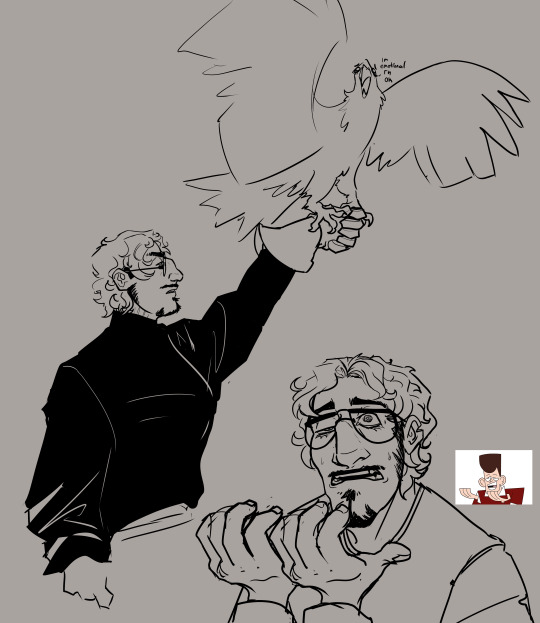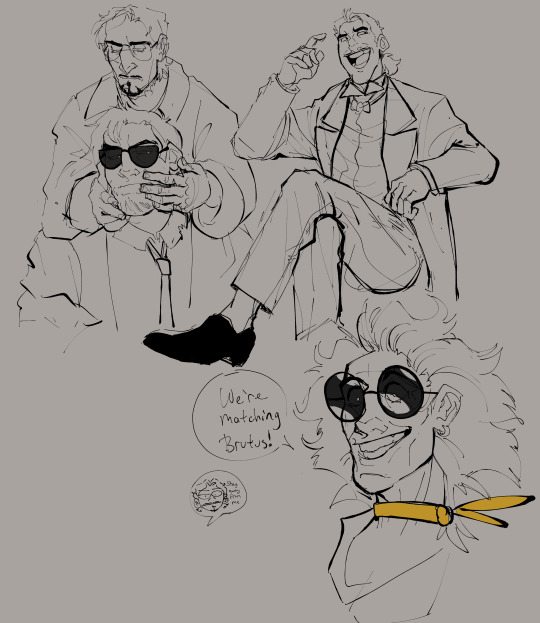#classical cryptography
Explore tagged Tumblr posts
Text
I got a Barbie Typewriter!
After a couple years of searching, I finally managed to get my hands on a Barbie toy electric typewriter!
For the unfamiliar, a neat aspect of Barbie typewriters is that some models have built-in cipher encoding and decoding modes, which, due to some quirks in how the typewriters were developed and marketed, were not advertised as features, so the cipher functionality was basically secret!
These days, the old school Barbie typewriters are relatively rare and usually pretty expensive, although the one I got was actually fairly cheap, due to being in somewhat rough condition. It unfortunately had quite a bit of battery corrosion, so it was untested and sold to be a “display piece”:

It even came with the original box (although it is certainly a little worse for wear lol)
The battery compartment was absolutely filled with corrosion residue, and traces of it had spread across the whole typewriter—it was everywhere!

I’m no expert in electronics, but I know that the presence of battery corrosion doesn’t necessarily mean that a gadget is broken beyond all repair, so I decided to try to see if a thorough cleaning could possibly get it working again.
So, I cleaned up the battery compartment with vinegar, took the whole back of the case off and wiped out the inside of it (which was coated in a thin layer of corrosion dust), and finally popped in some new C batteries. Then came the moment of truth, flipping the power switch!

And…nothing. Darn. 😔
Ah, well, it’s still a very cool display piece, and I’m happy to have it!

#Barbie#Barbie typewriter#typewriters#classical cryptography#long post#sC original#I had honestly resigned myself to the fact that I would never get one of these so I was THRILLED to find this :)
13 notes
·
View notes
Text
31 Days

Exactly a month ago, I started playing this game that my extended family had made. It's a daily math game, or like, a daily classical cryptography game. I have been solving the new puzzles each day, for 31 days.
I'm still taking it in, you know? I've never had such a clear idea of how long a month is, but now I have to know: It's the time between getting an email showing me this game and right now. Perhaps this should horrify me, as confronting the passage of time should come with the spectre of mortality. But as someone who has never believed herself to have a future, it has the opposite effect. It gives me a sense of just how time passes, how long things take, and how much I can do in a month.
But it's hard to believe there can be anything in my life so consistent. I flounder between projects and take opportunities when they come, my activities or mood on any given day is largely dependent on fate and happenstance. But I have somehow managed to do this one tiny thing each day for a month. It makes me think about the importance of rituals, to have something in your life that can anchor you in time.
These days, games come packed with rituals in some form or another. Plenty of games, online and offline, come with daily bonuses, daily activities, and rewards for sticking with it, every day. It's hard to know where to draw a line. These techniques are a few of many that companies can use to extract every bit of time, money, and attention out of you. But in individual cases I am okay with them. I like the daily nature of Wordle or Animal Crossing. I like it when Fire Emblem Fates or Bravely Default give me small rewards as real-world time passes. In the days of the DS or 3DS these mechanics felt more experimental and benign. I can't help but wonder if that was ever really true.
Summary is an ephemeral game. It changes every day, and a missed day cannot be taken back. Missing a day in my streak was actually what made me give up Wordle, unsurprisingly, and that'll probably be what gets me to drop this game. Back when Wordle was popular, there was a controversy over it being ephemeral like this. Some didn't like its daily slow-paced nature, which is fair enough if you don't care for game as ritual. Others made an argument that the daily format is inherently anti-preservation, as one day's experience will never be the same as the next. I balk at this framing, as someone in theatre. Yes, some art cannot be truly (or at least losslessly) preserved. It is of the moment, and that is part of the beauty of it. For art to be an event, for it to require you to be there, in that moment, is not as terrible a thing as some would tell you.
Thinking on it after a month, I'm not sure if I'd say I "like" Summary as a math-y puzzle game. It's missing the kind of tension and strategy that Wordle has, and while its puzzles are certainly coherent, I don't really feel like I'm getting "better" at the game, or that it particularly wants me to. I'm curious to ask the developers how they designed these puzzles, because as a designer, this game is a fascinating piece of work. But the Wordle formula is... It's one of those things, you know? It's like Minesweeper, it has a set of mechanics that just works, and it's hard to replicate without losing the charm somewhere. Summary is a good attempt, one I've stuck with for a month and plan to continue. But the ritual matters more than the game.
2 notes
·
View notes
Text






The vibes for another ones of my OCs for a fantasy/dark academia novel!
Her name is Solveig and I love her dearly so I hope you’ll like her too.
A few facts about her as an introduction:
She is a passionate reader and dabbles in alchemy, occultism and cryptography.
She loves waking up early, drinks six cups of coffee per day and has a pet crow named Huginn.
In the novel she will be one of Charles’ love interests and his mentor (and then, eventually, they will become academic rivals).
Photo credit to Pinterest
#academia aesthetic#dark academia#booklover#reader#bookdragon#dark academia books#classic academia#oc#oc aesthetic#dark acadamia aesthetic#occultism#cryptography#enemies to lovers#rivals to lovers#academic rivals#romantic academia#oc vibes#original character#writerblr#female writers#pinterest
41 notes
·
View notes
Text
Toward a code-breaking quantum computer
New Post has been published on https://thedigitalinsider.com/toward-a-code-breaking-quantum-computer/
Toward a code-breaking quantum computer


The most recent email you sent was likely encrypted using a tried-and-true method that relies on the idea that even the fastest computer would be unable to efficiently break a gigantic number into factors.
Quantum computers, on the other hand, promise to rapidly crack complex cryptographic systems that a classical computer might never be able to unravel. This promise is based on a quantum factoring algorithm proposed in 1994 by Peter Shor, who is now a professor at MIT.
But while researchers have taken great strides in the last 30 years, scientists have yet to build a quantum computer powerful enough to run Shor’s algorithm.
As some researchers work to build larger quantum computers, others have been trying to improve Shor’s algorithm so it could run on a smaller quantum circuit. About a year ago, New York University computer scientist Oded Regev proposed a major theoretical improvement. His algorithm could run faster, but the circuit would require more memory.
Building off those results, MIT researchers have proposed a best-of-both-worlds approach that combines the speed of Regev’s algorithm with the memory-efficiency of Shor’s. This new algorithm is as fast as Regev’s, requires fewer quantum building blocks known as qubits, and has a higher tolerance to quantum noise, which could make it more feasible to implement in practice.
In the long run, this new algorithm could inform the development of novel encryption methods that can withstand the code-breaking power of quantum computers.
“If large-scale quantum computers ever get built, then factoring is toast and we have to find something else to use for cryptography. But how real is this threat? Can we make quantum factoring practical? Our work could potentially bring us one step closer to a practical implementation,” says Vinod Vaikuntanathan, the Ford Foundation Professor of Engineering, a member of the Computer Science and Artificial Intelligence Laboratory (CSAIL), and senior author of a paper describing the algorithm.
The paper’s lead author is Seyoon Ragavan, a graduate student in the MIT Department of Electrical Engineering and Computer Science. The research will be presented at the 2024 International Cryptology Conference.
Cracking cryptography
To securely transmit messages over the internet, service providers like email clients and messaging apps typically rely on RSA, an encryption scheme invented by MIT researchers Ron Rivest, Adi Shamir, and Leonard Adleman in the 1970s (hence the name “RSA”). The system is based on the idea that factoring a 2,048-bit integer (a number with 617 digits) is too hard for a computer to do in a reasonable amount of time.
That idea was flipped on its head in 1994 when Shor, then working at Bell Labs, introduced an algorithm which proved that a quantum computer could factor quickly enough to break RSA cryptography.
“That was a turning point. But in 1994, nobody knew how to build a large enough quantum computer. And we’re still pretty far from there. Some people wonder if they will ever be built,” says Vaikuntanathan.
It is estimated that a quantum computer would need about 20 million qubits to run Shor’s algorithm. Right now, the largest quantum computers have around 1,100 qubits.
A quantum computer performs computations using quantum circuits, just like a classical computer uses classical circuits. Each quantum circuit is composed of a series of operations known as quantum gates. These quantum gates utilize qubits, which are the smallest building blocks of a quantum computer, to perform calculations.
But quantum gates introduce noise, so having fewer gates would improve a machine’s performance. Researchers have been striving to enhance Shor’s algorithm so it could be run on a smaller circuit with fewer quantum gates.
That is precisely what Regev did with the circuit he proposed a year ago.
“That was big news because it was the first real improvement to Shor’s circuit from 1994,” Vaikuntanathan says.
The quantum circuit Shor proposed has a size proportional to the square of the number being factored. That means if one were to factor a 2,048-bit integer, the circuit would need millions of gates.
Regev’s circuit requires significantly fewer quantum gates, but it needs many more qubits to provide enough memory. This presents a new problem.
“In a sense, some types of qubits are like apples or oranges. If you keep them around, they decay over time. You want to minimize the number of qubits you need to keep around,” explains Vaikuntanathan.
He heard Regev speak about his results at a workshop last August. At the end of his talk, Regev posed a question: Could someone improve his circuit so it needs fewer qubits? Vaikuntanathan and Ragavan took up that question.
Quantum ping-pong
To factor a very large number, a quantum circuit would need to run many times, performing operations that involve computing powers, like 2 to the power of 100.
But computing such large powers is costly and difficult to perform on a quantum computer, since quantum computers can only perform reversible operations. Squaring a number is not a reversible operation, so each time a number is squared, more quantum memory must be added to compute the next square.
The MIT researchers found a clever way to compute exponents using a series of Fibonacci numbers that requires simple multiplication, which is reversible, rather than squaring. Their method needs just two quantum memory units to compute any exponent.
“It is kind of like a ping-pong game, where we start with a number and then bounce back and forth, multiplying between two quantum memory registers,” Vaikuntanathan adds.
They also tackled the challenge of error correction. The circuits proposed by Shor and Regev require every quantum operation to be correct for their algorithm to work, Vaikuntanathan says. But error-free quantum gates would be infeasible on a real machine.
They overcame this problem using a technique to filter out corrupt results and only process the right ones.
The end-result is a circuit that is significantly more memory-efficient. Plus, their error correction technique would make the algorithm more practical to deploy.
“The authors resolve the two most important bottlenecks in the earlier quantum factoring algorithm. Although still not immediately practical, their work brings quantum factoring algorithms closer to reality,” adds Regev.
In the future, the researchers hope to make their algorithm even more efficient and, someday, use it to test factoring on a real quantum circuit.
“The elephant-in-the-room question after this work is: Does it actually bring us closer to breaking RSA cryptography? That is not clear just yet; these improvements currently only kick in when the integers are much larger than 2,048 bits. Can we push this algorithm and make it more feasible than Shor’s even for 2,048-bit integers?” says Ragavan.
This work is funded by an Akamai Presidential Fellowship, the U.S. Defense Advanced Research Projects Agency, the National Science Foundation, the MIT-IBM Watson AI Lab, a Thornton Family Faculty Research Innovation Fellowship, and a Simons Investigator Award.
#2024#ai#akamai#algorithm#Algorithms#approach#apps#artificial#Artificial Intelligence#author#Building#challenge#classical#code#computer#Computer Science#Computer Science and Artificial Intelligence Laboratory (CSAIL)#Computer science and technology#computers#computing#conference#cryptography#cybersecurity#defense#Defense Advanced Research Projects Agency (DARPA)#development#efficiency#Electrical Engineering&Computer Science (eecs)#elephant#email
5 notes
·
View notes
Text
literally Just got back & already staring at the books i need 2 organize with stress tears =___=
#GOD. god. fuck. going to install built ins w/ my siblings in a couple weeks so idk if i even should bother. but stilllllllllllllllllllll.#need 2 organize poetry / folklore / arthuriana / taschen / general art books / math & logic & cryptography / mystery anthologies#/ illustrated classics / all of the classics by time period & country............ ghghgh.#txt
4 notes
·
View notes
Text
gustav when you ask him for help using his filmmaking skills: :) gustav when you ask him for help using his codemaking/breaking skills: :/ :(
#he's so tired of being taken advantage of for cryptography reasons#no one ever wants to ask questions about how to film a musical adaptation of classic dramas#or how to add zombies into them#ooc.
1 note
·
View note
Text
That thing is actually a quantum fridge. Mind you if it was a functioning quantum computer you might be able to post memes that were entangled with elections
That picture of Biden looking at a quantum computer and being unable to grasp the true form of what he's seeing

To be fair that's how I would I react too
#had a job that involved being shown a lot of quantum fridges.#made these jokes a lot.#made this face a lot.#had to hear a lot of people tell me sincerely that the future of quantum computing is not in making a quantum computer#which we dont exactly have yet#but in quantum software which you would run on the computer you don’t have#and post-quantum cryptography and so on#which is all excessively nice and interesting but the discussions themselves are so inherently quantum#that you’re like. ok. can we have a classical conversation now#the future IS the future I agree.#👆
43K notes
·
View notes
Text
Why Quantum Computing Will Change the Tech Landscape
The technology industry has seen significant advancements over the past few decades, but nothing quite as transformative as quantum computing promises to be. Why Quantum Computing Will Change the Tech Landscape is not just a matter of speculation; it’s grounded in the science of how we compute and the immense potential of quantum mechanics to revolutionise various sectors. As traditional…
#AI#AI acceleration#AI development#autonomous vehicles#big data#classical computing#climate modelling#complex systems#computational power#computing power#cryptography#cybersecurity#data processing#data simulation#drug discovery#economic impact#emerging tech#energy efficiency#exponential computing#exponential growth#fast problem solving#financial services#Future Technology#government funding#hardware#Healthcare#industry applications#industry transformation#innovation#machine learning
1 note
·
View note
Text
I feel like Parker could get really into cryptography. Both in general but also specifically in a conspiracy theory ‘there are hidden messages in everything’ kind of way.
We’ve already seen her fall for conspiracy theories (The Three Days of the Hunter Job) and she loves puzzles, so I feel like it isn’t too far of a leap for her to start analyzing every message for secrets.
Also, considering Archie was a Classic Gentleman Thief ™️ I feel like he had to have taught her some old school spy hidden message stuff.
It isn’t really a problem until she starts using code in everything she says - in text or in person. A changing code that the others have to Hack in order to figure out what she wants.
Parker: The Walls Can’t Keep Us Trapped Forever, My Friend.
Hardison: Parker please just say we’re out of cereal like a normal person.
155 notes
·
View notes
Text






Did you guys know I've made a Classic Courier :3c Yuppers. Added another doppelgänger to the growing list of mailmen. "When will it end?" you cry - When will it indeed. Brutus "Birdie" Bunting Classic's Courier. Non-combatant. Expert in cryptography, conspiracy theories, obsessing and falling in love with people, languages, falconry, birds, birds, birds again, being a pathetic deplorable pitiful miserable biting soggy purse dog. We support trans wrongs ok. Just over all someone you don't wanna know but have to trust to get your mail and secret info where it needs to go. And at some point he gets partially decapitated but its ok! He comes back worse. ft friends classic ocs too!
#tf2 oc#tf2 courier#tf2 classic courier#tf2 classic oc#tfc oc#tf3#my art#these doodles dont rly say much about him as a character but im still navigating that#please know that he is just fucking insane#he looks so normal in these drawings he is not ok this man is a freak in every way#my oc
54 notes
·
View notes
Note
A fun source of randomness I read about once was Cloudflare's wall of lava lamps:

Cloudflare has arranged about 100 lava lamps on one of the walls in the lobby of the Cloudflare headquarters and mounted a camera pointing at the lamps. The camera takes photos of the lamps at regular intervals and sends the images to Cloudflare servers. All digital images are really stored by computers as a series of numbers, with each pixel having its own numerical value, and so each image becomes a string of totally random numbers that the Cloudflare servers can then use as a starting point for creating secure encryption keys.
hello please post the cryptography rant??? (if you want to and so on)
Hahaha ok then
So here is the post this is in reference to.
It’s a jokey thing about how OP could totally be responsible for generating the two-factor codes you get on your phone.
It is a funny harmless post so I decided not to be a pedantic weirdo in the comments. Instead I’m gonna be a pedantic weirdo here.
Here’s the problem with OP’s suggestion: humans suck at randomness.
(To be fair, computers also suck at randomness. It turns out it’s really hard in general to get a lot of data that is truly random. Which is such a problem for cryptography that most intro to cryptography textbooks have sections plural about things like what randomness is, what pseudorandomness is, how we define something as being sufficiently pseudorandom for cryptographic purposes... it’s a Whole Thing.)
At least on a conscious level, people are not great at coming up with things that are actually random. There seems to be some debate on the matter, but from what I can tell beyond paywalls, the meta-analyses and replication studies have pretty consistently found that humans are not good at making up random sequences of numbers. (I did find a lot of research about central nervous system disorders and executive function disorders indicating that people with those conditions are worse than healthy controls at generating “random numbers” -- suggesting that people without those conditions can do it -- but from what I can tell this body of research is using “random” in a very different sense than what is meant cryptographically.) Also, it’s common sense if you look at humans and how we make stuff up in the real world. We look for patterns in stuff. And if we see patterns, we assume it’s not really random, so we adjust for that... which then results in stuff that is counterintuitively LESS random than the real thing because in a truly random situation you would occasionally expect to see repetitions and patterns occur by chance. You can use human activity and behavior as a source for randomness, but you have to tweak it a bit before it’s actually random. Even if it’s minute differences in things like gait that you’re probably not consciously controlling.
Why does this matter though? Surely, you think, it doesn’t matter that much if a number sequence is actually random or just kinda arbitrary, right?
Well, no. Modern cryptography is built on assumptions about having random keys. If those assumptions don’t hold up in practice, then you have massive cracks in the foundation of the cryptosystem that attackers can exploit. Like with these voting machines. (caveat: this DOES NOT mean any elections were stolen. this was a privacy bug, where the secrecy of someone’s ballot could be compromised.) Or with this paper that found that about 1 in 200 of the embedded devices scanned was using an RSA key that could be broken because the random primes comprising it were not sufficiently random, and they had a shared prime factor with at least one other key. The lack of randomness was also instrumental at multiple stages of the cryptanalysis of Enigma (note the part about lazy cipher clerks, and the part about cillies). So long story short: - humans are bad at making up things that are actually random - if you design a cryptosystem with the assumption that something is actually random, it is VERY important that that is the case, otherwise it becomes possible (if not absurdly easy) to break the cryptosystem
#iirc people tend to think that odd numbers are 'more random' than even ones?#and if you ask someone for a random number between 1-100 they're less likely to give a multiple of 10 or 5#classical cryptography is not my area of expertise however-- if this protocol is not good feel free to correct me#there are quantum systems (which are my area of expertise!) that are truly random in a provable sense but they're slow at the moment
18 notes
·
View notes
Text
my extended family released a daily math game where two words add into a third where each letter is its own digit. i've been playing it for a week, and it's real cool! (link here)

2 notes
·
View notes
Text
Dorit Aharonov

Dorit Aharonov is an Israeli computer scientist specialising in quantum computing. She graduated from Weizmann Institute of Science with an MSc in Physics. She received her doctorate for Computer Science in 1999 from the Hebrew University of Jerusalem, and her thesis was entitled Noisy Quantum Computation. She also did her post-doctorate in the mathematics department of Princeton University and in the computer science department of University of California Berkeley. She was a visiting scholar at the Institute for Advanced Study in 1998–99. Aharonov was an invited speaker in International Congress of Mathematicians 2010, Hyderabad on the topic of Mathematical Aspects of Computer Science
Quantum computing
Aharonov's research is mainly about quantum information processes, which includes
quantum algorithms
quantum cryptography and computational complexity
quantum error corrections and fault tolerance
connections between quantum computation and quantum Markov chains and lattices
quantum Hamiltonian complexity and its connections to condensed matter physics
transition from quantum to classical physics
understanding entanglement by studying quantum complexity
#mathematics#maths#physics#stemblr#stem#steminist#women in stem#sub-at-omicsteminist#computing#quantum physics#computer science
149 notes
·
View notes
Text
notes on recrudescence
In classic fic writer irony, this fic required hours and hours of research that on occasion amounted to one line written on it.
On Magpies

This is how the oriental magpie looks. The japanese kanji for magpie is Kasasagi 鵲 - but I picked a different kanji - 笠鷺 (the direct translation of each individual character would be bamboo hat, heron) that actually is a legitimate name which reads the same as a tongue-in-cheek pun.
I found this little bird perfect, because it looks like a white and blue bird with its head painted black and i found it fitting.
On Jisei
Jisei are death poems which consist of five lines, with a total of 31 syllables (5-7-7-7) and are frequently composed by people on their deathbed. References to sunsets, autumn or falling cherry blossoms which suggest the transitoriness of life are common.
I picked my two favourites:
来時は空手、去時は赤脚。一去一来、単重交折[8]
Raiji wa karate kyoji wa sekkyaku ikkyoichirai tanjuu sekkou
Empty-handed I entered the world Barefoot I leave it. My coming, my going — Two simple happenings That got entangled.
By Kozan
and
願はくは花の下にて春死なむその如月の望月のころ
let me die in spring under the cherry blossoms on that day in the Second Month when the moon is full
negawaku wa | hana no shita nite | haru shinan | sono kisaragi no | mochizuki no koro
By Saigyo
On Substitution Ciphers
Okay, I'm no expert on cryptography and i really really struggled with this because i couldn't find something that already pre-existed in relation to a deck of cards that wouldn't take another deck and years off your life to solve.
Lo and behold - i realized that that from ace to king, there are 13 cards in a suit and I went oh **** it and made one from scratch. It's rudimentary and very basic (2 different cards can mean 1 particular letter) and also a proper cryptographer would make fun of me, but it works in a pinch.
Line break here, if you'd like to spare yourself.
Spade A - 1 - A Spade 2 - 2 - B Spade 3 - 3 - C Spade 4 - 4 - D Spade 5 - 5 - E Spade 6 - 6 - F Spade 7 - 7 - G Spade 8 - 8 - H Spade 9 - 9 - I Spade 10 - 10 - J Spade J - 11 - K Spade Q - 12 - L Spade K - 13 - M
Heart A - 14- N Heart 2 - 15 -O Heart 3 - 16 -P Heart 4 - 17 -Q Heart 5 - 18 - R Heart 6 - 19 - S Heart 7 - 20- T Heart 8 - 21 - U Heart 9 - 22 - V Heart 10 - 23 - W Heart J - 24 - X Heart Q - 25 - Y Heart K - 26 - Z
Diamond A - 1 - A Diamond 2 - 2 - B Diamond 3 - 3 - C Diamond 4 - 4 - D Diamond 5 - 5 - E Diamond 6 - 6 - F Diamond 7 - 7 - G Diamond 8 - 8 - H Diamond 9 - 9 - I Diamond 10 - 10 - J Diamond J - 11 - K Diamond Q - 12 - L Diamond K - 13 - M
Club A - 14- N Club 2 - 15 -O Club 3 - 16 -P Club 4 - 17 -Q Club 5 - 18 - R Club 6 - 19 - S Club 7 - 20- T Club 8 - 21 - U Club 9 - 22 - V Club 10 - 23 - W Club J - 24 - X Club Q - 25 - Y Club K - 26 - Z
G - Diamond 7 U - Club 8 N - Heart Ace
P - Heart 3 S - Club 6 N - Club Ace
11 notes
·
View notes
Text
Making classical music and math more accessible
New Post has been published on https://thedigitalinsider.com/making-classical-music-and-math-more-accessible/
Making classical music and math more accessible


Senior Holden Mui appreciates the details in mathematics and music. A well-written orchestral piece and a well-designed competitive math problem both require a certain flair and a well-tuned sense of how to keep an audience’s interest.
“People want fresh, new, non-recycled approaches to math and music,” he says. Mui sees his role as a guide of sorts, someone who can take his ideas for a musical composition or a math problem and share them with audiences in an engaging way. His ideas must make the transition from his mind to the page in as precise a way as possible. Details matter.
A double major in math and music from Lisle, Illinois, Mui believes it’s important to invite people into a creative process that allows a kind of conversation to occur between a piece of music he writes and his audience, for example. Or a math problem and the people who try to solve it. “Part of math’s appeal is its ability to reveal deep truths that may be hidden in simple statements,” he argues, “while contemporary classical music should be available for enjoyment by as many people as possible.”
Mui’s first experience at MIT was as a high school student in 2017. He visited as a member of a high school math competition team attending an event hosted and staged by MIT and Harvard University students. The following year, Mui met other students at math camps and began thinking seriously about what was next.
“I chose math as a major because it’s been a passion of mine since high school. My interest grew through competitions and continued to develop it through research,” he says. “I chose MIT because it boasts one of the most rigorous and accomplished mathematics departments in the country.”
Mui is also a math problem writer for the Harvard-MIT Math Tournament (HMMT) and performs with Ribotones, a club that travels to places like retirement homes or public spaces on the Institute’s campus to play music for free. He cites French composer Maurice Ravel as one of his major musical influences.
Mui studies piano with Timothy McFarland, an artist affiliate at MIT, through the MIT Emerson/Harris Fellowship Program, and previously studied with Kate Nir and Matthew Hagle of the Music Institute of Chicago. He started piano at the age of five and cites French composer Maurice Ravel as one of his major musical influences.
As a music student at MIT, Mui is involved in piano performance, chamber music, collaborative piano, the MIT Symphony Orchestra as a violist, conducting, and composition.
He enjoys the incredible variety available within MIT’s music program. “It offers everything from electronic music to world music studies,” he notes, “and has broadened my understanding and appreciation of music’s diversity.”
Collaborating to create
Throughout his academic career, Mui found himself among like-minded students like former Yale University undergraduate Andrew Wu. Together, Mui and Wu won an Emergent Ventures grant. In this collaboration, Mui wrote the music Wu would play. Wu described his experience with one of Mui’s compositions, “Poetry,” as “demanding serious focus and continued re-readings,” yielding nuances even after repeated listens.
Another of Mui’s compositions, “Landscapes,” was performed by MIT’s Symphony Orchestra in October 2024 and offered audiences opportunities to engage with the ideas he explores in his music.
One of the challenges Mui discovered early is that academic composers sometimes create music audiences might struggle to understand. “People often say that music is a universal language, but one of the most valuable insights I’ve gained at MIT is that music isn’t as universally experienced as one might think,” he says. “There are notable differences, for example, between Western music and world music.”
This, Mui says, broadened his perspective on how to approach music and encouraged him to consider his audience more closely when composing. He treats music as an opportunity to invite people into how he thinks.
Creative ideas, accessible outcomes
Mui understands the value of sharing his skills and ideas with others, crediting the MIT International Science and Technology Initiatives (MISTI) program with offering multiple opportunities for travel and teaching. “I’ve been on three MISTI trips during IAP [Independent Activities Period] to teach mathematics,” he says.
Mui says it’s important to be flexible, dynamic, and adaptable in preparation for a fulfilling professional life. Music and math both demand the development of the kinds of soft skills that can help him succeed as a musician, composer, and mathematician.
“Creating math problems is surprisingly similar to writing music,” he argues. “In both cases, the work needs to be complex enough to be interesting without becoming unapproachable.” For Mui, designing original math problems is “like trying to write down an original melody.”
“To write math problems, you have to have seen a lot of math problems before. To write music, you have to know the literature — Bach, Beethoven, Ravel, Ligeti — as diverse a group of personalities as possible.”
A future in the notes and numbers
Mui points to the professional and personal virtues of exploring different fields. “It allows me to build a more diverse network of people with unique perspectives,” he says. “Professionally, having a range of experiences and viewpoints to draw on is invaluable; the broader my knowledge and network, the more insights I can gain to succeed.”
After graduating, Mui plans to pursue doctoral study in mathematics following the completion of a cryptography internship. “The connections I’ve made at MIT, and will continue to make, are valuable because they’ll be useful regardless of the career I choose,” he says. He wants to continue researching math he finds challenging and rewarding. As with his music, he wants to strike a balance between emotion and innovation.
“I think it’s important not to pull all of one’s eggs in one basket,” he says. “One important figure that comes to mind is Isaac Newton, who split his time among three fields: physics, alchemy, and theology.” Mui’s path forward will inevitably include music and math. Whether crafting compositions or designing math problems, Mui seeks to invite others into a world where notes and numbers converge to create meaning, inspire connection, and transform understanding.
#2024#affiliate#approach#career#classical#Collaboration#collaborative#competition#Competitions#Composition#Creative Ideas#cryptography#details#development#diversity#double#electronic#emotion#event#Experienced#focus#Future#Global#harvard#how#how to#Ideas#Independent Activities Period#Innovation#insights
1 note
·
View note
Text
Light
Light exhibits several quantum properties that are fundamental to its behavior:
1. Wave-Particle Duality: Light exhibits both wave-like and particle-like properties, known as wave-particle duality. It can behave as both continuous electromagnetic waves and discrete packets of energy called photons.
2. Quantization of Energy: Light comes in discrete energy levels or quanta. Each photon carries a specific amount of energy determined by its frequency or wavelength. The energy of a photon is given by E = hf, where E is energy, h is Planck’s constant, and f is the frequency.
3. Superposition: Like other quantum particles, light can exist in a superposition of states. This means that it can simultaneously be in multiple quantum states until measured, at which point it collapses into a single state.
4. Quantum Entanglement: In certain situations, photons can become entangled, which means the properties of one photon become correlated with the properties of another, even when they are physically separated. This phenomenon is essential in quantum optics and quantum information science.
5. Quantum Interference: Photons can exhibit interference patterns when their waves overlap. This interference can be constructive (adding up to a brighter region) or destructive (resulting in dark regions). This behavior is commonly observed in experiments like the double-slit experiment.
6. Photon Polarization: Photons can be polarized, which means their electric field oscillations occur in a particular direction. Polarization is a quantum property that can be used in various applications, including polarized sunglasses and quantum communication.
7. Quantum Uncertainty: The Heisenberg Uncertainty Principle applies to light as well. This principle states that it’s impossible to simultaneously know both the exact position and momentum (or equivalently, wavelength and frequency) of a photon with infinite precision.
These quantum properties of light play a crucial role in quantum mechanics and have practical applications in fields such as quantum computing, quantum cryptography, and quantum optics. They challenge our classical intuition about the behavior of light and other particles at the quantum level.
38 notes
·
View notes